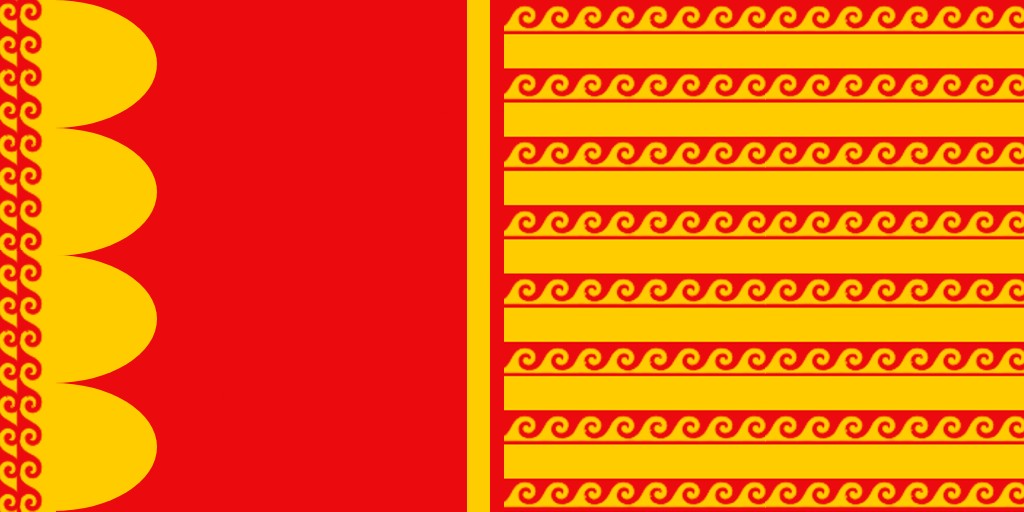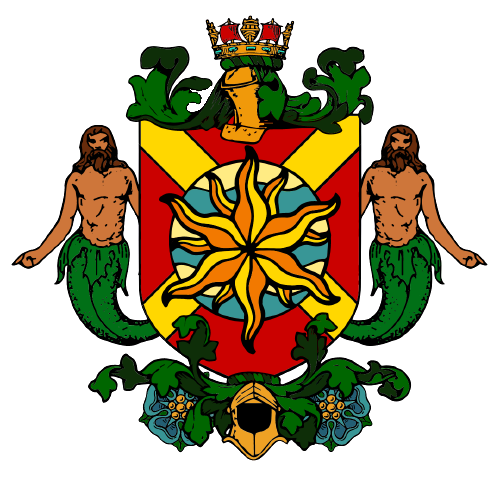Ajudige
Overview
|
Trex Reiuneux del'Ajudige The Three Kingdoms of Ajudige |
|
Flag of Ajudige |
|
Seal of Ajudige |
|
"De Ilax do Eternale Formosao" |
|
Motto "Iumeunitje i Amaoreu Sjeuprem Noix" |
|
Anthem: "De Misteriax del'Ajudige" The Secrets of the Ajudige |
|
Capital: Pjaia |
|
Official Language: Ajudigioux Minor Languages:
|
|
Demonym(s):
|
|
Nationality:
|
|
Religion: |
|
Government: Constitutional Republic
|
|
Legislature: Parliament
|
|
Currency: Ajudigioux Peisa (₱) (APS) |
|
Timezone: UTC-9 (SLST) |
|
HDI: 0.900 (Very High) |
The Three Kingdoms of Ajudige (Ajudigioux: Trex Reiuneux del'Ajudige; Spanish: Tres Reinos de Adige) is aan archipelagic country made up of islands located in the San Luis region of the Creative 1.15 map. It is bordered on all sides by the San Luis Sea and has maritime borders with Cascadia to the west of the Island of Ajudige.Ajudige and the United Republic to the east of the Island of Sjearseu. It is the only country in the San Luis region where majority of its population is made up of indigenous peoples and is the only country where Ajudigioux is the official language with English and Spanish being a common second languagelanguages amongst the population. Ajudige is a republic made up of 3 regions that arewere called Reiuneu (Kingdoms). These three kingdoms are the Reiuneu del'Ajudige, Reiuneu del'Sjeasqal,Sjearseu, and Reiuneu del'Baiepja. These three kingdoms is how Ajudige gets its official name. However, these three historic kingdoms have been split into five modern prefectures: Ajuruba, Diudi, Ajudige, Sjearseu, and Ilax del'Qjarao. Major population centers in Ajudige include Pjaia, Ajuruba, Cidadiu de'a Marex, Sao Fjroia, and Baxaio.
History
First Ancient Era (3000 B.C.E. - 0 C.E.)
Humans first arrived in Ajudige via a shallow land bridge sometime around 3000 B.C.E.. The early Ajudigioux shared a common ancestor with the Wendat, Choctaw, Gathawk, and Durbanian First Peoples. However, these ancient Ajudigioux followed a culture closer to that of the neolithic Qa peoples that inhabited the western forests of the San Luis Sea region. The ancient Ajudigioux were thought to have been drawn by the natural hot springs, fertile coastal plains, and sheltered bays of the landmass that they now inhabited. Small communities started to have been established around 2000 B.C.E. with many of the early settlements still being inhabited to the modern age, making Ajudigioux cities being some of the oldest in the world.
The Ajudigioux of the time were reliant on fishing, communal agriculture, and hunting of small game animals such as rabbits, squirrels, and prairie dogs. The food pallet of the Ajudigioux was mainly comprised of seafoods as meat from land animals was not always a guaranteeavailable and over hunting became an issue around 500 B.C.E. as a mass population drop in inland communities signifies.
The language of the people start to develop into its own,own unique language that is different from the Iroquois languages spoken by their ancestral relatives. Not many examples of ancient Ajudigioux survive to this day and not many elements of the ancient language has survived into the modern era. However, many places were named before colonization by the Spanish. Pjaia (Pa-aean), Diudi (Gdeu-gdee), and SjeasqalSjerseau (Se-re'oo) are all of ancient Ajudigioux origin.
Some of the most notable aspect of the First Ancient Period is the pottery. Ajudigioux pottery was made out of clays and other earthen material compared to the woven baskets of their Iroquois cousins. Examples of this type of pottery show that details in the clay were from plants, mainly grasses and seasonal wildflowers, that were imprinted on the sides of pots and vases. It is believed that the imprints were purely for decoration but some evidence shows that the imprints were used as a way of storage categorization.
Second Ancient Era (0B.C.E. - 600 C.E.)
The Second Ancient Era was when the rise of Ajudige began. This era saw rapid advancements in technology as well as the first signs of boat building. By this time, Ajudige had become an island and was isolated from the mainland, now dominated by Iroquois tribes.


